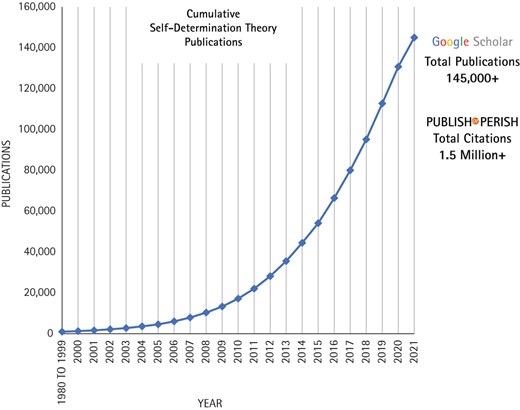 The Oxford Handbook of Self-Determination Theory
The Oxford Handbook of Self-Determination Theory
Contents
Foreword: Self-Determination Theory’s Forward Motion
-
Published:February 2023
Cite
The Center for Self-Determination Theory (CSDT) is proud to have been a part of producing this authoritative volume documenting the current state of research using self-determination theory (SDT). CSDT is a nonprofit organization created to sponsor and advance SDT’s scientific research as well as help people learn more about intrinsic motivation, basic psychological needs, and human autonomy and apply these concepts in their professional and daily lives. Now in our sixth year, CSDT’s work engages people worldwide through our online library of articles and metrics, interviews, videos, and posts by SDT experts. In addition, we host a variety of events, including SDT’s international conferences. CSDT’s commitment and the purpose of this present handbook are one and the same: disseminating the latest scholarship and creating the best possible conditions for high-quality motivation, engagement, and wellness.
The release of The Oxford Handbook of Self-Determination Theory will mark 20 years since the first handbook of SDT research was published, derived from presentations at the first International Conference on Self-Determination Theory. At that inaugural event, a group of approximately 75 researchers and students from four countries gathered in a small conference room at the University of Rochester, sharing the latest evidence, thoughts, and ideas and asking each other to think big: What could SDT contribute to human flourishing? Although the answers to that question may not have been fully apparent at the time, in the more than 20 years since then SDT has had enormous impact in many different areas of basic research and real-world practice, showing its forward motion in promoting human flourishing that continues today.
To put this growth into perspective: in 1999, there were fewer than 800 published papers on self-determination theory, according to Google Scholar; today the collection of publications on SDT is roughly 100,000—that is an increase of over 12,000%. And the number of citations for these publications is beyond remarkable, at over 1.5 million (per Publish or Perish data pulled from Google Scholar; see Figure 0.1).

Cumulative Self-Determination Theory publications from 1980 to 2021.
Since that first conference, scholars adopting an SDT lens have also proliferated, with hundreds now actively researching and applying the theory. They are generating new ideas and elaborating the theory’s contents to make it ever more useful. SDT’s principles backed by rigorous scholarship and action-oriented approaches have meaningfully contributed across the fields of basic and applied behavioral science, a fact well-evidenced in this Handbook.
For us at CSDT, the most fulfilling part of the theory has been the journey: the shared stories, the connections to others around the world, and the building of the sturdy framework that this book is helping to document. This work emerges from small research groups around the world in places like Rochester, Montreal, Ghent, Sydney, Be’er Sheeva, Lima, Paris, Singapore, and many other locations where new ideas are being spawned using the SDT framework. Particularly important for the theory’s growth have been the SDT international conferences (held every three years prior to the COVID pandemic), which have always felt like family reunions as well as being incubators of innovation. It’s all of those stories and the generativity of this community that has defined SDT. As we organized this Handbook, communicating with this varied group of authors, we reexperienced the thread that connects the SDT community, which is a focus on human flourishing and its facilitators. No matter how big or far-reaching, our community also comes together (perhaps more virtually these days) and connects through the shared language of SDT.
In this regard we at CSDT are particularly excited to present this new Handbook, with 57 chapters examining the latest findings, exploring newfound domains, grappling with complex issues that have local and global impact, and mapping directions for future research and interventions for the next generation of SDT scholars. We have many times thought the work in SDT had reached its conclusions, only to have new questions arise and new ways of applying SDT introduced, continuously expanding its scope, as the contents of this Handbook demonstrate. So, whether you’ve been a part of the SDT journey or this is the first SDT book that you’ve held in your hands, we hope you’ll find in this volume new perspectives, methods, and creative solutions for many of the problems facing our science and our world today.
| Month: | Total Views: |
|---|---|
| February 2023 | 8 |
| March 2023 | 36 |
| April 2023 | 20 |
| May 2023 | 20 |
| June 2023 | 16 |
| July 2023 | 21 |
| August 2023 | 12 |
| September 2023 | 21 |
| October 2023 | 20 |
| November 2023 | 13 |
| December 2023 | 15 |
| January 2024 | 35 |
| February 2024 | 19 |
| March 2024 | 22 |
| April 2024 | 23 |
| May 2024 | 28 |
| June 2024 | 10 |
| July 2024 | 16 |
| August 2024 | 15 |
| September 2024 | 15 |
| October 2024 | 17 |
| November 2024 | 23 |
| December 2024 | 21 |
| January 2025 | 22 |
| February 2025 | 45 |
| March 2025 | 26 |
| April 2025 | 25 |
| May 2025 | 2 |
